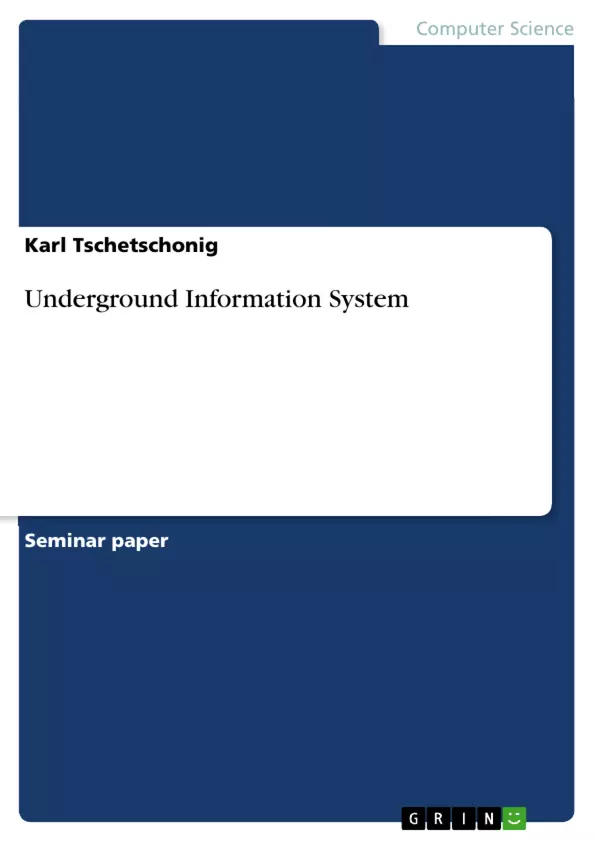The following report will give an introduction to WAP, its programming model, the architecture, services and peculiarities in comparison to the World Wide Web. WAP's features are evaluated and especially security, usability, performance and quality-of-service issues are reviewed. Based upon the WAP introduction and its major findings, an analysis and design has been made for a concrete WAP application. This application serves as an information system for transportation systems and allows users to be kept up-to-date on actual maintenance, breakdowns and malfunctions in a transportation network. Functional and non-functional requirements, use-cases, activities, the database scheme, deployment and realization requirements of the proposed project will be discussed. Finally, the report will conclude with an evaluation of the project and a discussion about possible extensions and further work.
Inhaltsverzeichnis (Table of Contents in English)
- Introduction
- Theories and concepts
- Theories of learning
- Constructivism
- Social constructivism
- Sociocultural theory
- Activity theory
- Research methods
- Case study research
- Qualitative data analysis
- Ethnographic methods
- The study
- The research context
- The participants
- Data collection and analysis
- Findings
- Learning in the digital age
- Collaborative learning
- The role of the teacher
- Discussion
- Implications for practice
- Conclusion
Zielsetzung und Themenschwerpunkte (Objectives and Key Themes in English)
This study aims to investigate the learning experiences of students in a digital learning environment, specifically focusing on the role of collaboration and the teacher's influence. It explores the theoretical frameworks of constructivism, sociocultural theory, and activity theory to understand how these theories apply to the learning process in the context of a digital environment. The main themes explored in this work include:- Learning in the digital age
- Collaborative learning
- The role of the teacher
- Qualitative research methods
- Case study research
Zusammenfassung der Kapitel (Chapter Summaries in English)
The introduction provides an overview of the study's context and objectives. It sets the stage for investigating learning experiences in a digital environment. Chapter 2 delves into various theories of learning, including constructivism, social constructivism, sociocultural theory, and activity theory. This chapter establishes a theoretical framework for understanding the learning process within the digital setting. Chapter 3 focuses on research methods, outlining the case study approach and qualitative data analysis techniques employed in the study. The study's research context, participants, and data collection methods are detailed in Chapter 4. Chapter 5 presents the findings of the study, focusing on the impact of the digital learning environment on student learning, the dynamics of collaborative learning, and the evolving role of the teacher in this new context. The discussion in Chapter 6 draws connections between the findings and the theoretical framework established in the earlier chapters, offering insights into the implications of the study's results.Schlüsselwörter (Keywords in English)
The main keywords and focus topics of the text are: digital learning environment, collaborative learning, teacher's role, constructivism, sociocultural theory, activity theory, case study, qualitative research, learning experiences, online learning, technology integration.- Quote paper
- Karl Tschetschonig (Author), 2008, Underground Information System, Munich, GRIN Verlag, https://www.grin.com/document/185045



